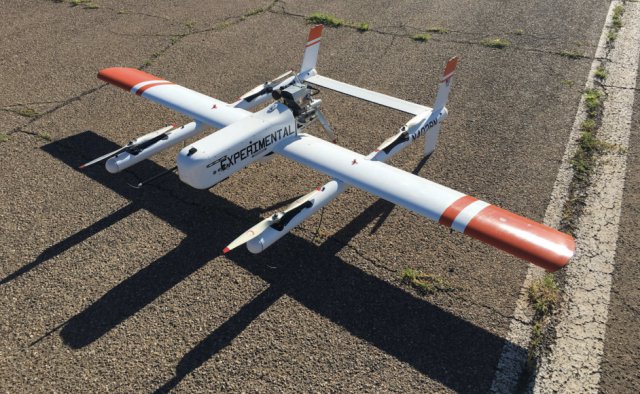 BNSF Railway Co. is flying drones as far as 150 miles (240 kilometers) along the New Mexico desert to inspect tracks, helping the Federal Aviation Administration develop rules for operating unmanned aircraft beyond the pilot’s line of sight. That’s an essential step for expanding use to such commercial endeavours as deliveries by Amazon.com Inc. and other companies.
BNSF Railway Co. is flying drones as far as 150 miles (240 kilometers) along the New Mexico desert to inspect tracks, helping the Federal Aviation Administration develop rules for operating unmanned aircraft beyond the pilot’s line of sight. That’s an essential step for expanding use to such commercial endeavours as deliveries by Amazon.com Inc. and other companies.
“We had to invent a lot of what we’re doing from scratch,” said Todd Graetz, head of the drone team at Fort Worth, Texas-based BNSF, which traces its roots back to the Aurora Branch Railroad’s founding in 1849 and is currently controlled by billionaire Warren Buffett. “It sets the stage for a number of other users.”
The “Holy Grail” is flying drones beyond what ground-based operators can see, said John Walker, co-founder of the Padina Group Inc. aerospace consulting firm. The potential uses — from track inspections, to spotting criminals on the lam, to organ deliveries for hospitals — will rival what happened a century ago, when airplanes became indispensable tools instead of stunt machines at county fairs, he said.
“It’s been barnstorming,” said Walker, a former FAA program director. “Now we’re getting into what is the commercial market.”
Industry’s Help
The FAA has enlisted assistance from BNSF and other companies to tackle the challenges in an airspace crowded with the most private planes in the world.
“The FAA itself can’t really move this forward on its own. It needs industry,” said Joanna Simon, an associate at Morrison & Foerster. The San Francisco-based law firm’s clients include Facebook Inc., which wants to use drones to provide internet service.
BNSF, owned by Buffett’s Berkshire Hathaway Inc., is particularly suited for the task. The railroad operates 32,500 miles of track crisscrossing sparsely populated areas along a well-defined right of way, which eases planning. Communications towers that are part of a safety system for trains can be used to help guide drones.
The railroad also has a compelling business case. The Latitude HQ-40 drone that Graetz supervises has a six-foot wingspan and is equipped with cameras that when paired with special software can potentially detect track anomalies more quickly, possibly preventing derailments. The flights, from just outside of Playas, New Mexico, lay the groundwork for drone inspections of other fixed infrastructure, such as pipelines and power lines.
“The more we fly, the more imagery we collect, the more we run it through the analytics, the better things get,” Graetz said.
BNSF isn’t ready to reveal how it plans to overcome these challenges, said Graetz, an airplane pilot. The company and its partners are working on the final proposal to the FAA for full operation beyond line of sight, he says. Today, some of the railroad’s methods are low tech, such as e-mails, phone calls and visits to small airports along the rail route to warn people of drone flights.
“There’s the process of good old shoe leather to get to know the airport managers and spreading the news about what we’re doing,” he said.
Source: Bloomberg
